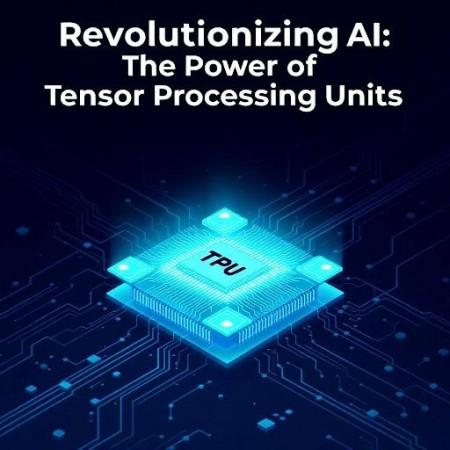
In the rapidly advancing world of artificial intelligence, computational efficiency is a vital element that determines the pace at which machine learning models evolve. This evolution has been propelled by specialized hardware like Tensor Processing Units (TPUs), which are purpose-built to handle the immense computational demands of AI workloads. Nikhila Pothukuchi explores how TPUs are reshaping the AI landscape, making technology more efficient and scalable.
A Breakthrough in Hardware Design
Unlike general-purpose processors or graphics processing units (GPUs), TPUs represent a ground-up design specifically aimed at accelerating machine learning operations. The first-generation TPUs, introduced in 2016, revolutionized neural network processing in data centers by offering increased performance and reduced energy consumption. With their systolic array architecture, TPUs optimized matrix operations, achieving exceptional performance with minimal energy consumption. The initial TPU version was able to perform 92 tera-operations per second while consuming just 40 watts, far outpacing GPUs in energy efficiency and speed.
Architectural Excellence: Systolic Arrays and Beyond
At the heart of TPUs is their systolic array architecture, allowing the TPU to perform over 65,000 multiply-and-add operations simultaneously, reducing training times dramatically. With TPU v4, the architecture delivers up to 275 teraFLOPS, enabling faster training of massive models in a fraction of the time it would take using GPUs. These advancements have brought us closer to AI systems capable of handling real-world, complex challenges efficiently.
Memory Systems Designed for Speed
TPUs are equipped with high-bandwidth memory systems that allow rapid data retrieval and processing, crucial for AI models that handle large datasets. TPU v4's memory system reduces energy consumption while accelerating model training, achieving up to 96% energy efficiency. This memory design ensures faster data movement, enabling more reliable performance across diverse AI applications, especially in training deep neural networks.
Training AI Models at Unprecedented Speeds
The TPU's memory and computational efficiencies translate into significant improvements in training speeds for AI models. TPU v4 pods can reduce training times for large-scale language models by up to 78%, enabling faster iterations and more complex models to be trained in shorter periods. This improvement is valuable for real-time AI applications that require rapid learning and deployment.
The Democratization of AI through Cloud Access
Cloud-based TPU deployments have made high-performance AI computing accessible to a wider range of organizations, drastically reducing time-to-market and operational costs. Cloud services allow companies to avoid the upfront investment required for on-premises hardware. Cloud TPUs democratize access to cutting-edge computing power, making AI research and development more inclusive for industries worldwide.
Efficiency Gains and Environmental Impact
TPUs also bring substantial environmental benefits, drastically reducing CO₂ emissions by over 70% compared to GPU-based systems. This energy-efficient design contributes to more sustainable AI operations. The reduction in power consumption leads to significant cost savings, aligning with global sustainability goals while maintaining high AI performance.
The Future of AI: Toward Exascale and Beyond
Looking ahead, TPUs are evolving with technologies like neuromorphic and photonic computing, promising even greater computational speeds and energy efficiency for future AI systems. These advancements will enable multi-modal AI systems capable of processing vast amounts of data across various domains, accelerating research in areas requiring immense computational power, such as scientific discovery and climate modeling.
In conclusion, Tensor Processing Units are revolutionizing AI by optimizing matrix operations, memory systems, and power efficiency. Their integration into cloud platforms has democratized access to powerful AI tools, leveling the playing field for organizations of all sizes. As these innovations continue to evolve, TPUs will play a central role in shaping the future of AI, driving the next generation of intelligent systems. Nikhila Pothukuchi's exploration underscores the transformative potential of purpose-built hardware in advancing AI development.

















